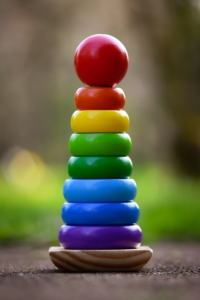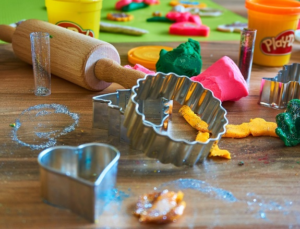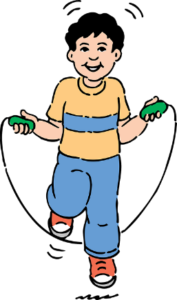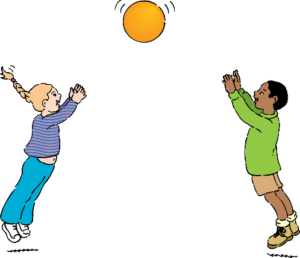1. Paper Puzzle
Age group: 2 – 3 years, 3 – 4 years, 4 – 6 years
Thank you for reading this post, don't forget to subscribe!
Paper Puzzle is a very simple activity that requires only one material and can go a long way to boosting your child’s concentration, attention, and reasoning skills.
How to do this:
Get a magazine, and choose pictures or photos that are large and colourful. Cut out a picture carefully, and then cut it up into 4 pieces. Jumble them up. Then, ask your child to put the pieces together correctly to form the picture. To make it more challenging, make more than 4 pieces of the picture, make the pieces irregular, or you can even use 2 different pictures and jumble their pieces together.
2. Playing with Opposites
Age group: 2 – 3 years, 3 – 4 years, 4 – 6 years
This fun game stimulates the learning centre in your child’s brain and can improve his reasoning and imaginative skills.
How to do this:
Draw, or print out from the Internet, pictures of opposite things, such as:
- A hard object and a soft object (eg: a rock and a piece of cotton)
- An object facing up and one facing down
- Indoor environment and outdoor environment (eg: a bedroom and a park)
- A big object and a small object (eg: a boulder and a pebble)
- A dark-coloured object and a light-coloured object (eg: dark chocolate and white chocolate)
Draw (or paste the print-out) of each object on a separate piece of paper. Lay out the pieces of paper randomly on the table. This is a good learning opportunity for your little one, as you can teach him about the different kinds of opposites and relate them to the cards.
Pick out the card that shows a big object, and describe it to him. Then, ask him to pick out the card that shows a small object. Keep going this way till all the opposites are done!
3. Stacking Game
Age group: 2 – 3 years, 3 – 4 years, 4 – 6 years
This game is very quite simple, but it does challenge your child’s spatial skills and thinking capacities, as he will learn what goes on top of what, how things fit together, and how to pick out the right thing to stack next.

How to do this:
Pick out your child’s toys that can be stacked one on top of the other (building blocks, rings, etc.). Then, tell your little one that he has to try and stack the toy as high as he can go.
4. Play Dough Factory
Age group: 2 – 3 years, 3 – 4 years, 4 – 6 years
This simple game encourages your child to expand his imagination, and stimulates his thinking capacity.

How to do this:
It’s always best to get non-toxic play dough. This is a fun bonding opportunity for you and your little one, as you can teach him how to make all kinds of shapes like squares, spheres, triangles, etc., and how to use those shapes to make objects like building blocks, lollipops, stick figures, and more.
5. I Spy
Age group: 2 – 3 years, 3 – 4 years, 4 – 6 years
This game will help your child learn new vocabulary words, will increase his thinking capacity as he will have to think about object qualities like colour, shape, size, and texture, and it will also increase his observational capacities!
How to do this:
You know how it goes, Mom! All you have to do is keep a nearby, visible object in mind and describe it to your child in this way: “I spy with my little eye, something that is big/green/soft/square/etc.” Use descriptive words as hints until your child gets the object. Encourage him to ask questions that will tell him what the object is like.
6. Mirror Game
Age group: 2 – 3 years, 3 – 4 years
This is another fun, bonding activity that you can do with your little one while also teaching him body awareness, the meaning of identity, and new vocabulary.
How to do this:
Stand with your kid in front of a big mirror. Tell him to observe his reflection, as well as yours. Make some faces, or do some jigs in front of the mirror. Next, help your child understand his different body parts by pointing out his nose, mouth, chest, neck, etc. Then, point out the same body parts on yourself.
Then, say the name of a body part, and ask him to point it out on himself and then on you.
7. Animal Sounds
Age group: 2 – 3 years, 3 – 4 years, 4 – 6 years
This activity is a simple memory-boosting game.
How to do this:
Show your little one pictures of animals that make different sounds. If your child does not have a picture book of animals, you can show him pictures from the Internet. Pick an animal, and imitate its sound. For example, pick out a cat, show your child the picture, and tell him that a cat makes a “Meow” sound. Repeat this with other animals, like a cow, an elephant, a dog, a goat, a sheep, a pig, etc. While you’re doing this, make sure that your child repeats the animal’s sound after you. Help him say it correctly.
Another fun aspect to employ is to keep going back to previous animal pictures and see if he remembers that animal’s sound. For example, go back to the cat picture after 2 – 3 consecutive animals, and ask him if he remembers what the cat says. Then, you can also ask him if he remembers all the animal sounds you’ve shown him till now.
8. Simon Says
Age group: 2 – 3 years, 3 – 4 years, 4 – 6 years
Everyone loves Simon Says, don’t they? This fun game will help your child enhance his listening skills, focus, and attention.
How to do this:
Explain to your child the only instruction in this game: if you say, “Simon says, raise your hand/sit down/etc.” then your little one must do so. But, if you don’t say “Simon says” before telling him the activity, then he shouldn’t follow it.
Give him fun instructions like “jump up and down”, “run in place”, and “do a dance”, and keep alternating between saying “Simon says” and not saying it.
9. Solving a Maze
Age group: 4 to 6 years
Solving maze puzzles is an interesting challenge for your child, and it can help to enhance his focus, attention, and reasoning skills.

How to do this:
You can either get a puzzle book for him, or download different mazes from the Internet, or even create one yourself! Start him off with simple ones and gradually increase their complexity to make it a challenging and fun hobby.
10. Skipping
Age group: 4 – 6 years
Skipping is a great physical activity for people of all ages, but it is particularly beneficial for kids! It is excellent for building focus, attention, and memory, not to mention being a stamina booster as well.

How to do this:
If your child doesn’t already have a skipping rope, do buy him one. If he doesn’t yet know how to skip using the rope, this is the perfect time to teach him. Encourage him to skip daily, and he’ll definitely thank you for it!
11. Catching and throwing
Age group: 3 – 4 years, 4 to 6 years
This is probably one of the oldest games in the world! It is another activity that can greatly increase your child’s focus and concentration.

How to do this:
For younger children (3 to 4 years old), use big, light balls like beach balls, as it won’t hurt them, and they will be able to judge the ball better. Making sure that they are on stable ground and unlikely to trip or fall, throw the ball to them carefully and lightly from a short distance. Try to ensure that they catch it, as it will make them happy and confident!
For older children (4 to 6 years old), you can use smaller balls, like yellow smiley balls. Teach them to focus on the ball and give them tips on how to catch it correctly.
12. Ping Pong (Table Tennis)
Age group: 4 – 6 years
Ping pong is a fun physical activity that will help improve your child’s focus, attention, and reasoning skills.
How to do this:
At home, you can use your dining table as the ping pong table, with a makeshift net created by little boxes stacked together. If you don’t have rackets or a ball, either borrow some or buy some. They’ll always come in handy! Involve other family members, and make it a fun family activity.
13. Beading Activities
Age group: 3 – 4 years, 4 – 6 years
Sorting and threading beads to make homemade accessories and décor is a wonderful and simple activity that can increase your little one’s attention, concentration, memory, and reasoning skills.

How to do this:
Gather beads of different shapes, sizes, and colours. For younger children (3 to 4 years), you can ask them to sort out the beads based on their size (big, medium, small), shape (circular, square, triangular, etc.), and colour (reds, pinks, blues, greens, etc.). Then, you can ask them to thread a simple, repetitive pattern of beads (eg: red bead, blue bead, green bead, red bead, blue bead, green bead, and so on).
For older children (4 to 6 years old), you can ask them to sort out the beads and then give them a more challenging pattern to thread, involving all the shapes, sizes and colours.
14. Word Searches
Age group: 4 – 6 years
Word searches are excellent brain-stimulating activities, as they require lots of focus, concentration, and attention.
How to do this:
You can either get your child a book of different word searches, or download some from the Internet, or create some yourself. Try to give him different themed searches, such as animals and birds, body parts, vehicles, etc.
15. Word Jumbles
Age group: 4 – 6 years
Word jumbles are excellent activities, too! They can help enhance your little one’s concentration, attention span, memory, and reasoning.
How to do this:
As with word search books, you can find word jumble books, or download jumbles off the Internet, or create them yourself. Try to keep the jumbles themed, like animal names, food items, colours, vehicles, etc. To make it more personalized, jumble the names of family members, his friends, or favourite cartoon characters. And remember to give him a few hints to help him along if he gets stuck!











